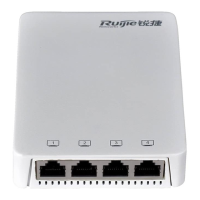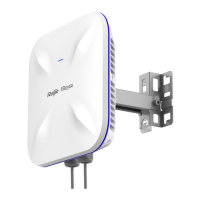Configuration Guide Configuring 802.1X
Accounting End
After a user goes offline, the NAS sends the RADIUS server an accounting end packet carrying the online period and traffic
of the user. The RADIUS server generates online records based on the information carried in this packet.
4.3.4 RIPT
802.1X-enabled STAs support RIPT. When the AC is faulty or disconnected from the AP, 802.1X on the AP continues to
provide authentication service for customers.
Working Principle
Configure the RIPT AP group on the AC and enable RIPT. (For details, see the Configuring RIPT.) In RIPT AP authentication
mode, the AC delivers 802.1X-related configurations to the RIPT-enabled APs. Then the APs act as the access devices to
independently provide complete 802.1X authentication services for customers. (STAs do not have to perform 802.1X
authentication on the AC.) User information on the APs is synchronized to and viewed on the AC.
Assigning Configuration
In RIPT AP authentication mode, configure AAA, RADIUS, and enable 802.1X controlled ports through RSNA on the AC so
that the configurations can be assigned to RIPT-supported APs. After all required configurations are assigned to APs, APs
provide WLAN services such as 802.1X authentication for customers.
Synchronizing User Information from APs to the AC
STAs connect to RIPT-enabled APs for 802.1X authentication. 802.1X user information on the APs is synchronized to and
viewed on the AC.
4.4 Configuration
802.1X authentication is not supported on AP220-E v1.xx, AP220-SE v1.xx, AP220-SH v1.xx, AP220-E(M) v1.50,
AP620-H v1.xx or AP620-H(-S) v1.xx.
Configuring 802.1X Basic
Functions
(Mandatory) It is used to configure basic authentication and accounting.
Configures an AAA authentication method
list.
Configures an AAA accounting method list.
Configures the RADIUS server parameters.

